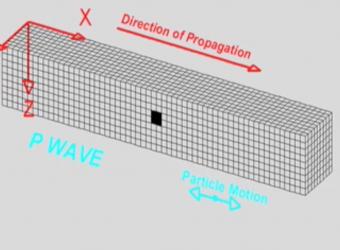
Seismic P waves are also called compressional or longitudinal waves, they compress and expand (oscillate) the ground back and forth in the direction of travel, like sound waves that move back and forth as the waves travel from source to receiver. P wave is the fastest wave.
Particle motion consists of alternating compression and dilation. Particle motion is parallel to the direction of propagation (longitudinal). Material returns to its original shape after wave passes.
Animation by Larry Braile,Purdue University.

Working in both small groups and as a whole class, students investigate the classic Earth science analogy: "Seismic waves radiate outward from an earthquake's epicenter like ripples on water". A discrepant image connects the unfamiliar concept of the spreading out of seismic waves to the more familiar scenario of ripples on water radiating outwards in all directions after a droplet falls onto a pool.
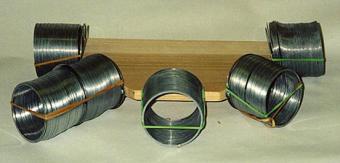
The slinky is an effective tool for the demonstration seismic wave characteristics and wave propagation. Slinkys can be used both individually and in various combinations to demonstration different concepts.
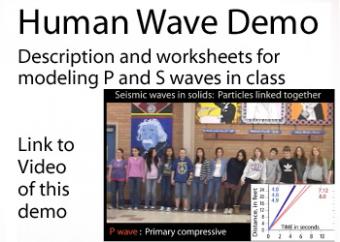
Remember the “stadium wave,” when one person stands and raises his hands in the air and the motion is translated completely around the arena? This simple kinesthetic demonstration uses a similar principal by sending seismic waves through a line of people to illustrate the difference between P waves and S waves propogating through various materials. Lined up shoulder-to-shoulder, students to "become" the material that P and S waves travel through so that once "performed," the principles of seismic waves will not be easily forgotten.
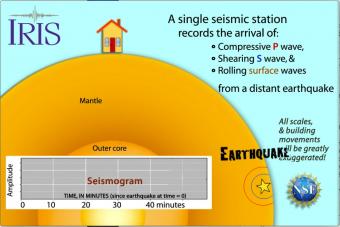
Seismic waves travel through the earth to a single seismic station. Scale and movement of the seismic station are greatly exaggerated to depict the relative motion recorded by the seismogram as P, S, and surface waves arrive.
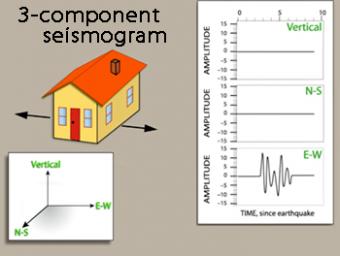
We use exaggerated motion of a building (seismic station) to show how the ground moves during an earthquake, and why it is important to measure seismic waves using 3 components: vertical, N-S, and E-W. Before showing an actual distant earthquake, we break down the three axes of movement to clarify the 3 seismograms.
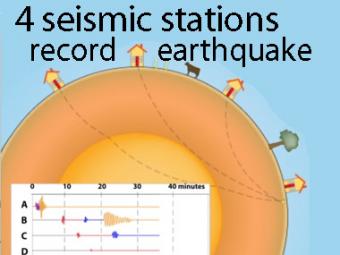
A cow and a tree in this narrated cartoon for fun and to emphasize that seismic waves traveling away from an earthquake occur everywhere, not just at seismic stations A, B, C, and D. A person would feel a large earthquake only at station A near the epicenter. Stations B, C, D, and the cow are too far from the earthquake to feel the seismic waves though sensitive equipment records their arrival.
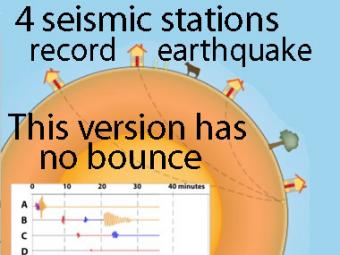
This companion to the animation "Four-Station Seismograph network" shows the arrival of seismic waves through select wave paths through the Earth (P and S waves) and over the surface of the Earth. The movement at distant stations occurs at a microscopic scale. While that doesn't result in noticeable movements of the buildings, the arrivals are recorded on sensitive seismometers.
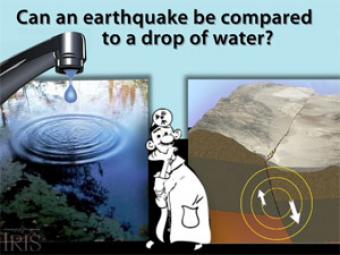
Exploration of how an earthquake is LIKE ripples on/in water. Dr. Geophysics guides you through the simple physics of potential energy and energy release. Analogies are a useful instructional strategy, especially in the science classroom. In this case, the analog is a drop of water hovering above and then falling into a pool of water, while the target is an earthquake.

Part 2/2 Comparing seismic waves to ripples in water. This animation explores how seismic waves are UNLIKE ripples on water. Dr. Geophysics helps explain 4 significant differences.
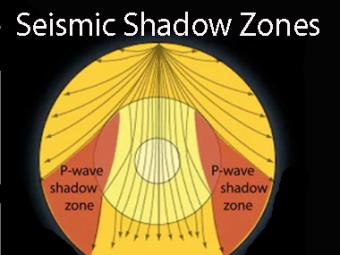
Seismic shadow zones have taught us much about the inside of the earth. This shows how P waves travel through solids and liquids, but S waves are stopped by the liquid outer core.
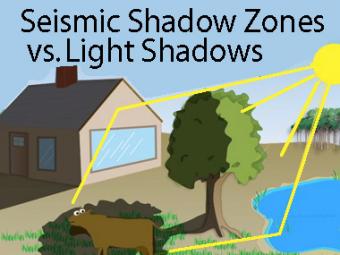
The wave properties of light are used as an analogy to help us understand seismic-wave behavior.
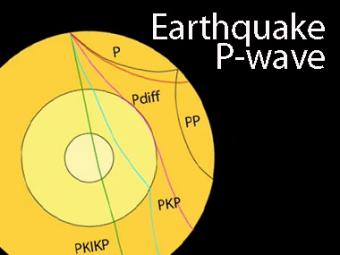
The shadow zone is the area of the earth from angular distances of 104 to 140 degrees from a given earthquake that does not receive any direct P waves. The different phases show how the initial P wave changes when encountering boundaries in the Earth.
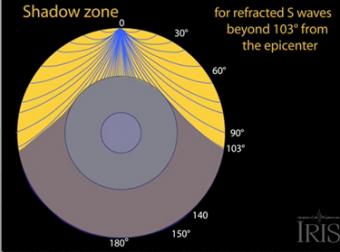
The shadow zone results from S waves being stopped entirely by the liquid core. Three different S-wave phases show how the initial S wave is stopped (damped), or how it changes when encountering boundaries in the Earth.

This poster combines a visualization of ground motion resulting from the February 21, 2008 M 6.0 earthquake that occurred near Wells, NV, with the image of a faucet to illustrate a classic Earth science functional analogy: "Seismic waves radiate outward from an earthquake's epicenter like ripples on water".

An interactive website, where one can investigate the classic Earth science analogy; "Seismic waves radiate outward from an earthquake's epicenter like ripples on water".
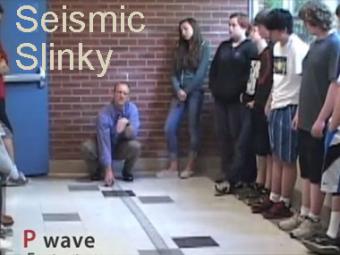
A video demonstration of how a slinky can be a good model for illustrating P & S seismic waves movement.
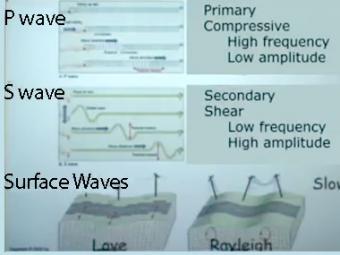
Video lecture on wave propagation and speeds of three fundamental kinds of seismic waves.
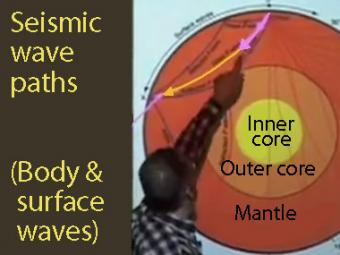
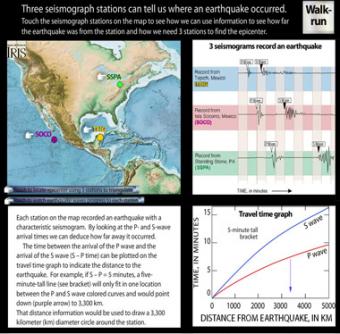
Each station on the interactive map recorded an earthquake with a characteristic seismogram. Roll over the stations to see the epicenter triangulated. Touch buttons to watch movie of seismic waves, or touch "Walk-run" button to see wave travel can be demonstrated with a class.
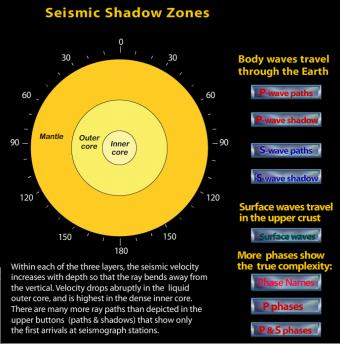
Roll over the buttons to see the difference between P- and S-wave seismic paths as well as their respective shadow zones.